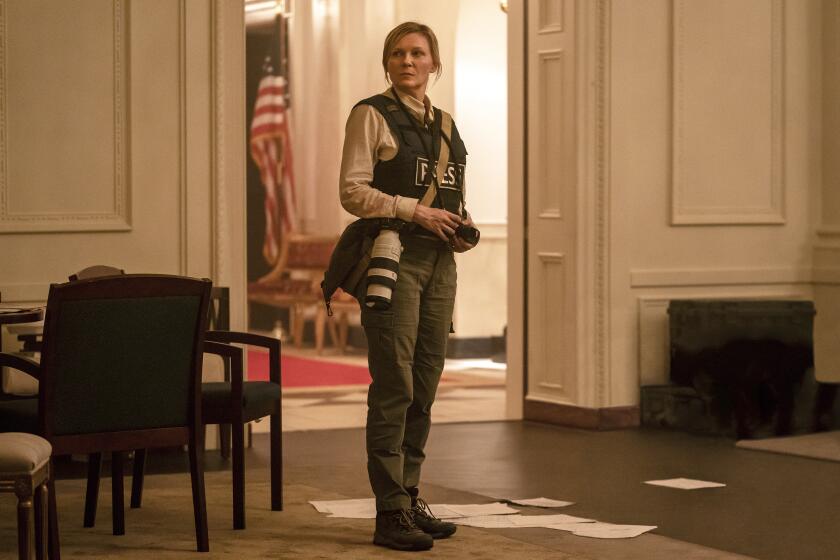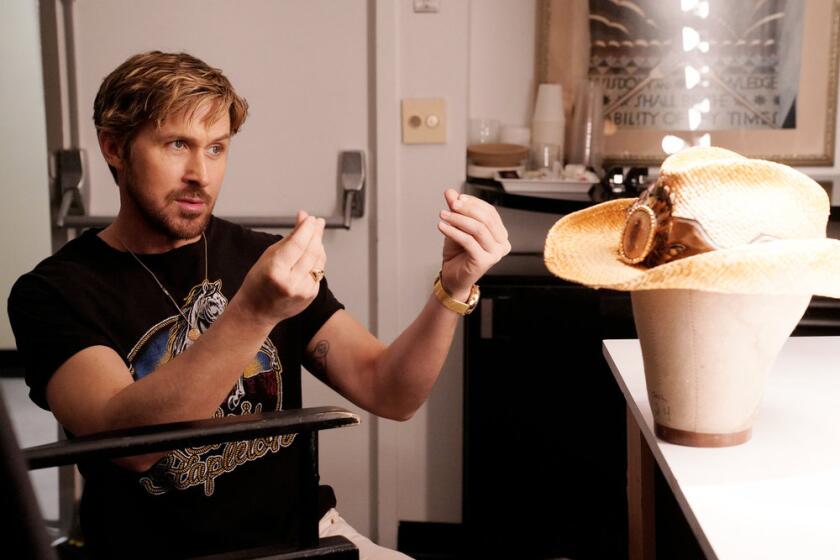Documentary looks at the bravery and despair on the front lines of America’s deadly drug epidemic
The police radio echoes like an eerie chorus through the streets of a broken place.
“It’s sad when you can drive around the city and say, ‘Oh, somebody died there, somebody died there.’ But that’s the reality of this area,” says Jan Rader, the fire chief in Huntington, W.Va. “I fear we’ve lost a couple of generations.”
That is the lament of “Heroin(e),” a new Netflix documentary by Elaine McMillion Sheldon that burrows into the opioid and heroin epidemic that has torn through families in a city where the wayward and the young are too often fitted into coffins.
Rader is one of the film’s three heroines who refuse to let their town succumb to a national scourge of drug overdoses that killed about 64,000 people last year, overran rehabilitation clinics and is costing the healthcare industry billions of dollars.
It is an affliction that has coursed through the country like cracks on a frozen lake, splintering across economic classes but taking particularly heavy tolls in poor, white communities like Huntington, where prescription drug abuse and peddling pain killers and narcotics began decades ago against economic decline and hopelessness. The city and county of 96,000 people counts up to seven overdoses a day and in 2015 amassed more than $100 million in medical costs related to drug use.
“I was constantly seeing mug shots and obituaries of people I went to high school and middle school with,” said Sheldon, who grew up in the coal fields not far from Huntington and in 2013 made a Web-based documentary called “Hollow” about poverty and despair in the state’s McDowell County. “A lot of stories about Appalachia and West Virginia are told by outsiders, so I felt I had a responsibility to tell the story with a more nuanced point of view.”
That perspective gives “Heroin(e)” a knowing intimacy as the film follows the triumphs and setbacks of Rader; Judge Patricia Keller, who runs the local drug court; and Necia Freeman, whose Brown Bag Ministry delivers food and Bible passages to prostitutes and addicts. In one scene, Freeman, bewildered at the broken lives that saunter up to her car window, asks: “What is so powerful about this heroin?” The response that comes from a young woman is at once declarative and haunting: “Getting high on heroin is what it would be like for you to kiss Jesus.”
“It doesn’t shock me anymore.”
— A man standing over a woman who overdosed in a convenience store
Rader, Keller and Freeman are compassionate but not naive about the addiction, lies, recidivism and wrecked lives they encounter. Drug use, including of elephant tranquilizers and highly lethal fentanyl, has become so pervasive that a man standing over a woman who overdosed in a convenience store looks into the camera and says: “It doesn’t shock me anymore.”
His words are both an indictment and a mourning for a community and a nation — drug overdoses are the top cause of death of Americans under age 50 — that reads between the lines of obituaries.
The 40-minute film, now playing on Netflix, is a ride-along through a part of the country that has long been stigmatized and caricatured. Huntington sits near the borders of Ohio and Kentucky, at the rim of the coal fields to the south and highways leading to factories in the north. Prescription drugs took hold in this region in the 1980s to treat the injuries of coal miners and laborers. But as jobs declined and despair set in, the grip of addiction in this corner of Trump’s America spiraled to Oxycontin, heroin, fentanyl and even more potent concoctions.
“We felt left behind. I feel the otherness,” Sheldon said of Appalachia’s stereotypes and isolation. “But this is the whole country’s problem.” The extent of drug abuse in West Virginia was exposed in a series of Pulitzer Prize-winning stories in the Charleston Gazette-Mail that featured startling statistics, including the fact that drug companies shipped almost 9 million opioid pills over a two-year period to one pharmacy in a town with a population of 392.
While other cities have attempted to downplay the epidemic, Huntington has been “transparent about the (overdose) numbers. Their honesty is admirable,” said Sheldon, who is making a follow-up documentary about recovering addicts. “The city is in a huge amount of trouble with its budget. This epidemic is more than they can afford. They wanted to open up about it to get help. It could bankrupt them.”
Dressed in a pressed white shirt, shiny black shoes and snapping on rubber gloves at overdose scenes, Rader, the first female professional fire chief in West Virginia history, is the film’s dogged conscience. Her territory stretches along the Ohio River in winter twilight, coal trains passing and police radios leading her to the strung out and the dead. She won’t give up, even on an addict named Cody, slumped against a bathroom door when she arrives.
“I’m built to help people,” she says in a plain-spokenness that steadies the air around her.
Rader hands out Naloxone, a drug to treat overdoses, to her crew; she worries about the toll it’s taking on her paramedics and firefighters, seeing the bodies of 30 to 40 young people a year. Some in Huntington are less forgiving, wondering how many times addicts should be revived. Rader tells them 50 or however many times it takes, because you never know what will be the time that saves a life for good.
“It’s a long haul,” she says, hurrying out the door to another overdose somewhere in the city.
‘Heroin(e)’
Where: Netflix
When: Now streaming
Rating: TV-14
See the most-read stories this hour »
Twitter: @JeffreyLAT
ALSO
Muralist Robert Vargas is painting a towering history of L.A. above the traffic
Ethan Hawke lets us in his editing room and reveals what Philip Seymour Hoffman taught him
More to Read
Only good movies
Get the Indie Focus newsletter, Mark Olsen's weekly guide to the world of cinema.
You may occasionally receive promotional content from the Los Angeles Times.







